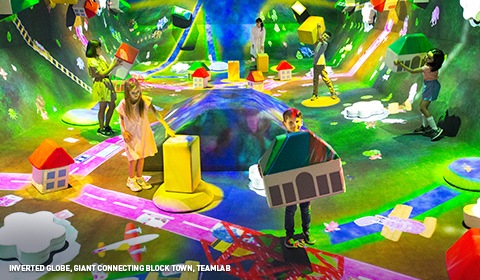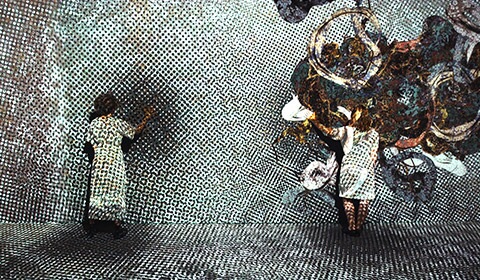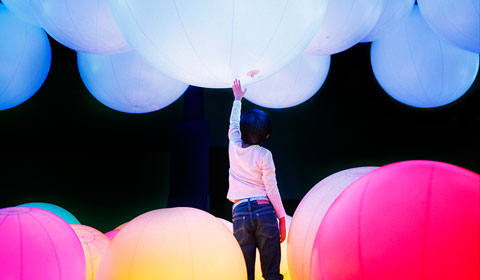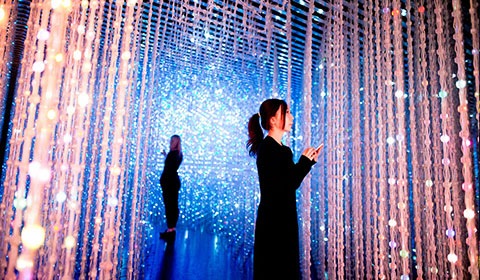Future World is an exhibition at the ArtScience Museum consisting of various themed galleries. The installations are created by the Japanese art collective, teamLab. The collective consists of interdisciplinary artists and specialists, like architects, mathematicians, animators, who navigate the confluence of art, science, technology, design and the natural world.
EXHIBITION LAYOUT
The exhibition was made up of four segments: City in A Garden, Sanctuary, Park and Space. There are multiple interactive works in each segment which relate to the theme.




LEARNING POINTS
Here are some insights I gained from exploring the exhibition, which I feel are important factors to think about for interactivity and interactive projects.
1. Increased sense of self
Something that made the teamLab installations so immersive, aside from the scale of the projections and artworks, was that it heightened the viewer’s consciousness of themselves, of being there in the space. In the installations, every single action taken by the viewer causes some sort of reaction, which feeds into the environment around them. While this is quite commonly seen in interactive art, there are some instances in the teamLab works where the viewer leaves a mark behind that is unique to them, and to that time and space in which they were present.
Some examples of this were the waterfall projection in the first segment, and in the gallery Sanctuary. There is an imprint of the person standing in front of the waterfall, while in Sanctuary, a circle radiates from the feet of the visitor.


The interaction is tailored to the visitor, in which their being in the space alters it in a unique way. Hence the viewer’s sense of self, their awareness of their bodies in relation to the space is heightened and this increases the immersiveness of the entire installation.
2. Ownership of action
Secondly, the installations give visitors the agency to own their actions in the space. Examples of this include the Aquarium installation and the Hopscotch building station. The aquarium allows visitors to colour in various marine creatures, scan them and see them in the bigger screen with other fishes. The Hopscotch stations let visitors create their own game layout, and then add a signature so the work is identified as theirs.



The installations allow viewers to leave their unique mark in the space. Because their action is made identifiable, it helps the viewer feel a greater connection to it, and changes how they view their interactions the context of the whole work. It becomes something that belongs to the visitor, and that is now part of this larger space. By giving the viewer such ownership, the interaction is more significant and impactful for the viewer.
In conclusion, I think there are many factors that make teamLab’s works so successful, such as visual appeal, scale and interactivity. In my opinion, it is the deliberation and attention to detail in these interactions that has created a truly immersive and memorable experience for its visitors.